The use of captured German tanks and self-propelled guns in the initial period of the Great Patriotic War
In the initial period of the war, the main striking force of the Panzerwaffe was built at German factories Tanks: Pz.Kpfw.II, Pz.Kpfw.III, Pz.Kpfw.IV, captured Czechoslovakian PzKpfw. 35 (t) and PzKpfw. 38 (t), as well as self-propelled guns StuG.III.
According to information published in the reference book "German Land Army 1933-1945", as of June 22, 1941, on the eve of the attack on the USSR, the total number of tanks and self-propelled guns (excluding flamethrowers) among the Germans in the East was 3332 units. During the first year of the war, for various reasons, about 75% of the original German tank fleet was lost.
German tanks in varying degrees of safety were captured by the Red Army in the first days of the war. But there is very little reliable information about the combat use of captured armored vehicles in June-July 1941.
In conditions of a disruption in communication with higher headquarters, detailed reports on the progress of the battles often did not reach them. Of no less importance was the fact that the front line was unstable, and the battlefield often remained behind the enemy. Nevertheless, several cases of the use of captured armored vehicles by the Red Army in June-August 1941 were documented.
First Venture
The first mention of the use of captured German tanks in battles dates back to June 28-29, 1941.
It is known that in the zone of responsibility of the 8th Mechanized Corps on the Southwestern Front, our troops found 12 enemy tanks, which were blown up by mines and put out of action by artillery fire. Subsequently, these vehicles were used as fixed firing points near the villages of Verba and Ptichye. Due to the rapid change in the front line, these captured German tanks as pillboxes were not used for long.
After the initial shock caused by the sudden attack of the enemy passed, and our troops gained combat experience, the intelligent use of captured armored vehicles began.
So on July 7, 1941, during a counterattack by the 18th Panzer Division of the 7th Mechanized Corps of the Western Front, military technician of the 1st rank Ryazanov (18th Panzer Division) in the Kotsy area broke through with his T-26 tank into the rear of the enemy, where within 26 hours fought. Then he again went out to his own people, leading out of the encirclement two T-XNUMXs and one captured Pz.Kpfw.III with a damaged gun. It is not known whether the armament of the trophy troika was brought into working order, but ten days later this vehicle was lost.
In a battle on August 5, 1941, on the outskirts of Leningrad, the combined tank regiment of the Leningrad armored training courses for command personnel captured two tanks of Czechoslovak production, which were blown up by mines. Apparently, we are talking about light tanks PzKpfw. 35 (t), which belonged to the 6th such division of the Wehrmacht. After repairs, these machines were used against their former owners.
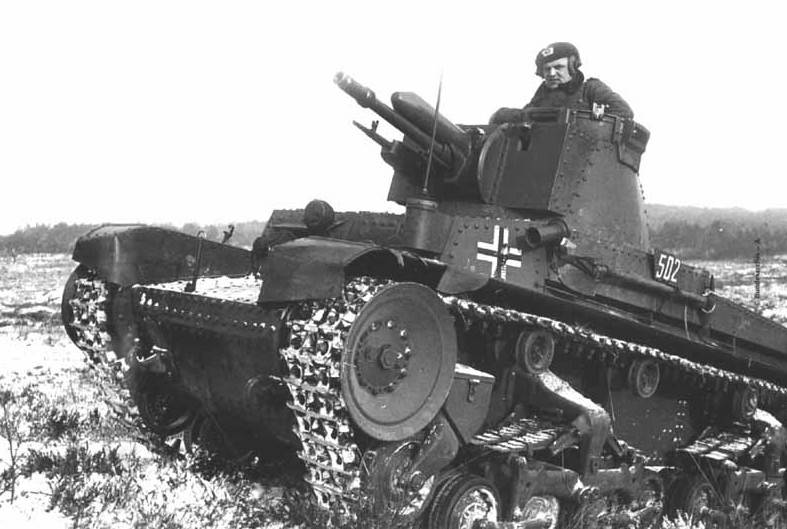
Light tank PzKpfw. 35 (t)
The first German self-propelled guns StuG.III were captured by the Red Army in August 1941 during the defense of Kiev. In total, our troops had two serviceable vehicles at their disposal. One of them, after being shown to the residents of the city and staffing with a Soviet crew, went to the front, the other was evacuated to the East.
During the Smolensk defensive battle in September 1941, the tank crew of Junior Lieutenant Klimov, having lost their own tank, moved to the captured StuG.III. And during the fighting he knocked out two enemy tanks, an armored personnel carrier and two trucks.
October 8, 1941 Lieutenant Klimov, commanding a platoon of three captured StuG III,
for which he was nominated for the award of the Order of the Battle Red Banner.
On December 2, 1941, Lieutenant Klimov's self-propelled gun was destroyed by German artillery, and he himself was killed.
In 1941, the Red Army, conducting heavy defensive battles, used captured armored vehicles sporadically. Tanks and self-propelled guns repulsed from the enemy appeared in noticeable numbers in the Red Army in the spring of 1942. These were mainly vehicles that were knocked out or abandoned by the enemy, which remained on the battlefields after the end of the battle for Moscow, as well as successful counterattacks at Rostov and Tikhvin. In total, at the end of 1941, our troops managed to capture more than 120 units of tanks and self-propelled guns, suitable for further use after carrying out refurbishment.
Trophy department
For the organized collection of trophies, at the end of 1941 in the Armored Directorate of the Red Army, an evacuation and trophy collection department was created, and on March 23, 1942, the People's Commissar of Defense of the USSR signed an order "On accelerating the evacuation of captured and domestic armored vehicles from the battlefield."
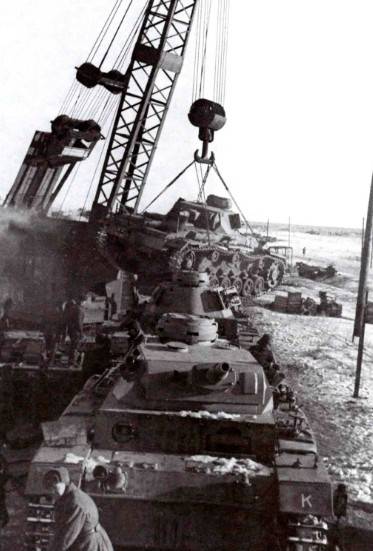
Loading captured tanks onto railway platforms to be sent for repairs.
Several enterprises were involved in the restoration and repair of captured armored vehicles. The first repair base, which began to bring the captured enemy tanks into working order, was the repair base No. 82 in Moscow. This enterprise, created in December 1941, was originally intended to repair British tanks that arrived under Lend-Lease. However, already in March 1942 captured tanks began to be delivered to Rembaza No. 82.
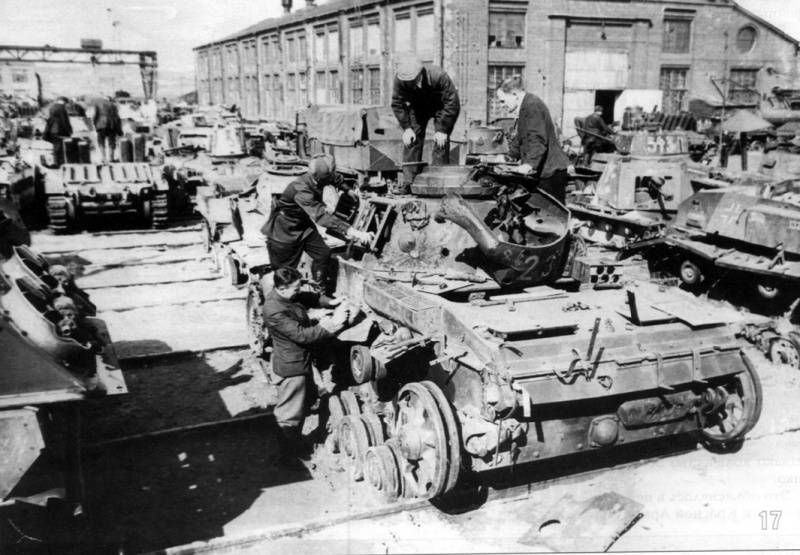
Another Moscow repair company engaged in the restoration of German armored vehicles was a branch of Plant No. 37, created on the site of the production evacuated to Sverdlovsk. The branch was engaged in the repair of light Soviet T-60 tanks and trucks, the restoration of light tanks PzKpfw.I, PzKpfw.II and PzKpfw. 38 (t), as well as armored vehicles.
Since 1941, 32 bases of central subordination have been repairing captured weapons and equipment. Engines and transmissions were repaired using parts removed from vehicles that could not be restored, and damage to the chassis was repaired. Twelve heavy industry factories were involved in the case, which were managed by different people's commissariats. In total, in 1942, about 100 copies of captured tanks and self-propelled guns were repaired at the repair depots.
After the encirclement and defeat of the 6th German Army at Stalingrad, a significant amount of armored vehicles fell into the hands of the Red Army.
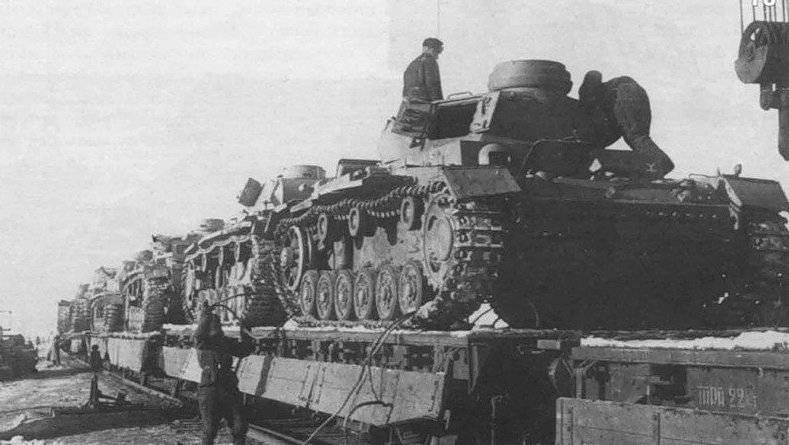
Part of it was restored and used in subsequent battles. So, at the restored plant number 264 in Stalingrad from June to December 1943, 83 German Pz tanks were repaired. Kpfw.III and Pz. Kpfw.IV.
During wartime, Soviet factories repaired at least 800 captured tanks and self-propelled guns, some of them were transferred to the active army, some to military schools and reserve units, and some were converted into ACS SG-122 and SU-76I, equipping them with Soviet-made guns ...
In addition to the rembases located in the deep rear, mobile technical brigades were formed in the frontline zone, which, if possible, repaired captured equipment on the spot.
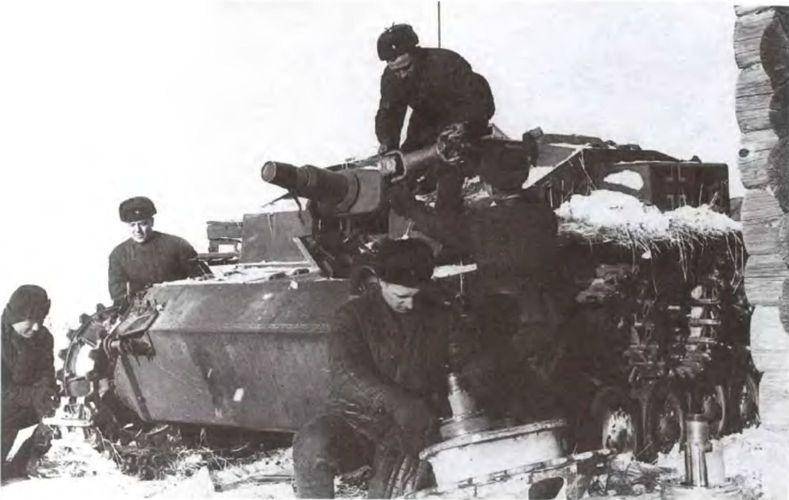
Repair of ACS Stug.III in the frontal zone.
To facilitate the development and operation of captured tanks by the Red Army tankers in 1942, specialized memos were published on the use of the most massive samples of captured German combat vehicles.
Considering the use of captured tanks, it is worth describing in more detail the equipment on which Soviet crews most often fought. In the first year of the war, our troops captured PzKpfw.I and PzKpfw.II light tanks.
Light tanks PzKpfw.I and PzKpfw.II
The light tank Pz.Kpfw.I (with machine-gun armament and a crew of two) was considered from the very beginning as a transitional model on the way to building more advanced tanks.
By the time of the attack on the USSR, the PzKpfw.I, armed with two rifle-caliber machine guns and protected by bulletproof armor, was frankly outdated and therefore mainly used in rear units, for training purposes and for patrolling front-line roads. Tanks of this type were converted into ammunition carriers and artillery observer vehicles. A number of captured PzKpfw.Is were rebuilt at reman bases, but there is no information about their combat use.
The Red Army captured several tank destroyers 4,7cm Pak (t) Sfl. auf Pz.Kpfw.I Ausf.B, which are also known as Panzerjäger I. This was the first serial German anti-tank self-propelled gun, created on the chassis of the Pz.Kpfw.I Ausf.B. In total, 202 self-propelled guns were built using the PzKpfw.I chassis.
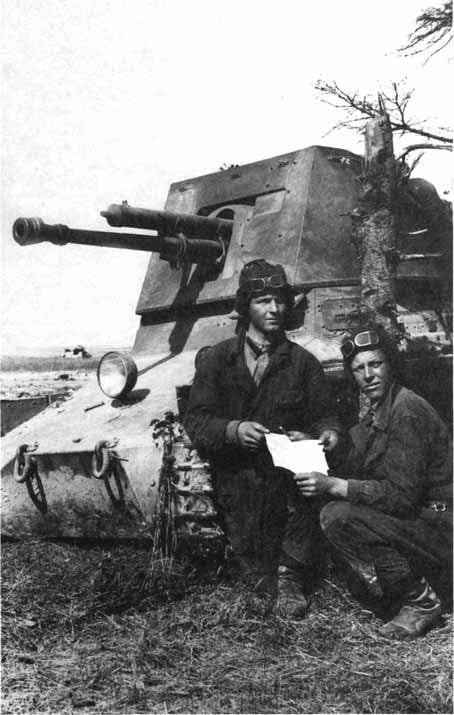
Soviet tankers next to the captured tank destroyer Panzerjager I.
Instead of the dismantled turret, a wheelhouse was installed on the chassis of a light tank with a 47-mm anti-tank gun of Czechoslovak production 4,7cm PaK (t). Before entering service with the Pak 50 38-mm anti-tank gun, this gun was the most powerful anti-tank weapon of the Wehrmacht, very slightly inferior to the latter in terms of armor penetration. At a distance of 1000 m at a right angle, an armor-piercing projectile pierced 55 mm of armor.
In 1941, to increase the armor penetration of the gun, the Germans introduced the PzGr 40 armor-piercing sub-caliber projectile with a tungsten carbide core into the ammunition load, which, at a distance of up to 400 m, confidently pierced the frontal armor of the Soviet medium tank T-34. However, the share of sub-caliber shells in the ammunition load of German anti-tank guns was small, and they turned out to be effective only at a relatively short distance.
The PzKpfw.II light tank was armed with a 20 mm automatic cannon and a 7,92 mm machine gun.
The armor-piercing shells of the 20-mm automatic cannon easily overcame the protection of Soviet light tanks built in the 1930s, but were powerless against the frontal armor of the T-34 and KV-1 even when fired at pistol-shot distance.
The PzKpfw. II armor provided protection against armor-piercing rifle bullets.
Weakly armed tanks were not of particular value, and therefore the use of captured PzKpfw.II was episodic, mainly for reconnaissance, patrolling and protecting the rear of objects. Several repaired light "panzers" in 1942 in the Red Army were operated as artillery tractors.
Pz.Kpfw.38
Of much greater interest in terms of combat use was a Czech-made tank (t). Compared to the PzKpfw.II, this vehicle had more powerful armament and better armor protection. In addition (according to the recollections of specialists who participated in the restoration of captured armored vehicles), tanks built in Czechoslovakia were structurally simpler than German-made vehicles. And it was easier to repair them. In most cases, if the damaged Pz.Kpfw.38 (t) did not burn, they turned out to be suitable for restoration or served as a source of spare parts.
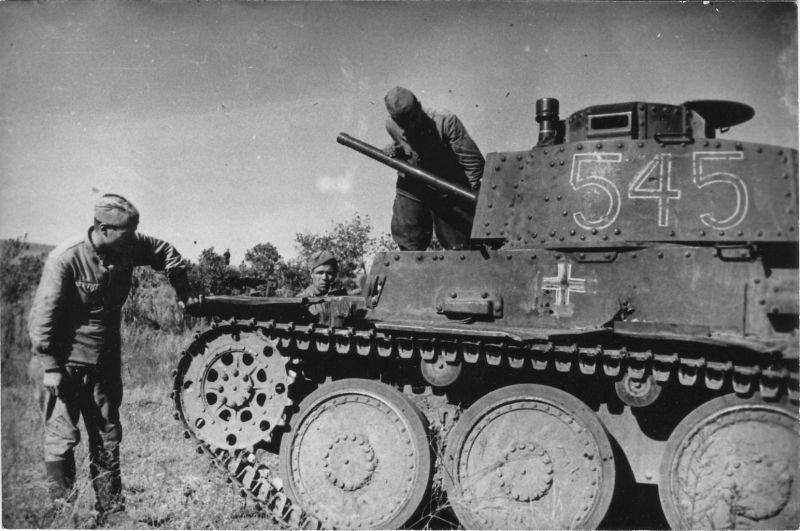
The Red Army soldiers inspect the Pz.Kpfw. 38 (t) tank.
After the occupation of Czechoslovakia, the Germans got over 750 light tanks LT vz. 38, which were designated Pz.Kpfw.38 (t) in the Wehrmacht.
By the standards of the late 1930s, it was a decent combat vehicle. With a combat weight of about 11 tons, a 125 hp carburetor engine. from. accelerated the tank on the highway to 40 km / h.
The frontal armor of the modernized tanks was 50 mm thick, and the sides and stern were 15 mm thick.
The Pz.Kpfw. 38 (t) tank was armed with a 37 mm cannon and two 7,92 mm machine guns. A 37-mm gun with a 42-caliber barrel at a distance of 500 m along the normal could penetrate 38 mm armor.
Thus, the Pz.Kpfw.38 (t), surpassing the Soviet light tanks T-26, BT-5 and BT-7 in protection, could confidently hit them at real battle distances.
At the same time, Czech armor was inferior in quality to German. If the 45-mm armor-piercing shells of 50 mm frontal armor confidently held at a distance of more than 400 m, then the hits of 76,2-mm high-explosive fragmentation and armor-piercing shells in most cases were fatal - the Pz.Kpfw.38 (t) armor was too fragile.
Another reason for the increased vulnerability was that the hull and turret of the Pz.Kpfw.38 (t) were assembled with riveted joints. Even in the absence of through penetration, when a projectile hits, the inner part of the rivet often breaks off and turns into a striking element.
Despite the shortcomings, in the German tank divisions that participated in the attack on the USSR, there were 660 Pz.Kpfw.38 (t) units, which was approximately 19% of the total number of tanks involved in the Eastern Front. The Soviet troops managed to capture about 50 Pz.Kpfw.38 (t) fit for restoration, of which about three dozen were brought to combat readiness.
Most likely, the first case of combat use of captured Pz.Kpfw.38 (t) took place in the Crimea. Several of these tanks from the 22nd Panzer Division of the Wehrmacht were captured, and these tanks fought for a short time as part of the Crimean Front.
As for the vehicles repaired at Rembaza # 82, their armament was changed. Instead of 7,92 mm ZB-53 machine guns, the tanks were rearmed with Soviet 7,62 mm DT-29. Also, the issue of replacing the 37-mm turret gun with a 45-mm 20K cannon and a 20-mm TNSh-20 automatic cannon was being considered.
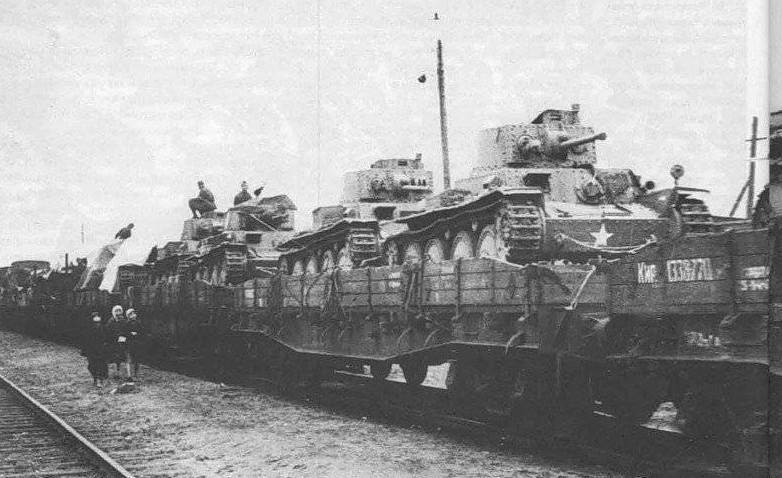
Echelon with repaired and re-equipped captured Pz.Kpfw. 38 (t) tanks.
It is reliably known that the captured Pz.Kpfw.38 (t) were transferred to a separate special tank battalion (OOTB), which was part of the 20th Army of the Western Front.
The battalion was formed in July 1942, its commander was Major F.V. Nebylov. This unit participated in hostilities from August to October 1942, and was often referred to in documents by the name of the commander
To prevent the shelling of the OOTB tanks by their troops, large white stars were applied to the frontal plate of the hull and side of the tower.
During positional battles, a special tank battalion suffered heavy losses. Due to combat damage and malfunctions, shortly before the withdrawal of the battalion for re-formation, the surviving Pz.Kpfw.38 (t) tanks were dug into the ground and used as fixed firing points.
Trophy triplets and fours
In the initial period of the war, the most frequently used captured tank in the Red Army was the medium Pz.Kpfw.III. At the end of 1941 - beginning of 1942, as part of tank units, together with the T-26, BT-5, BT-7, T-34 and KV, trophy troikas often fought.
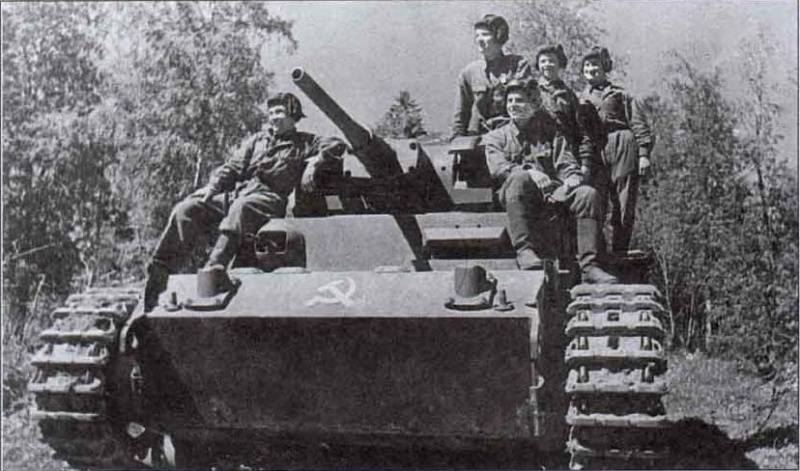
According to archival sources, by mid-1942, Soviet troops captured more than 300 serviceable or recoverable Pz. Kpfw.III and SPGs based on them. Apparently, these are the vehicles that got into the official reports and were evacuated to collection points of captured armored vehicles. But some of the captured Pz.Kpfw.III tanks and the StuG.III self-propelled guns, captured in good condition or repaired in front-line mobile workshops, were not officially recorded.
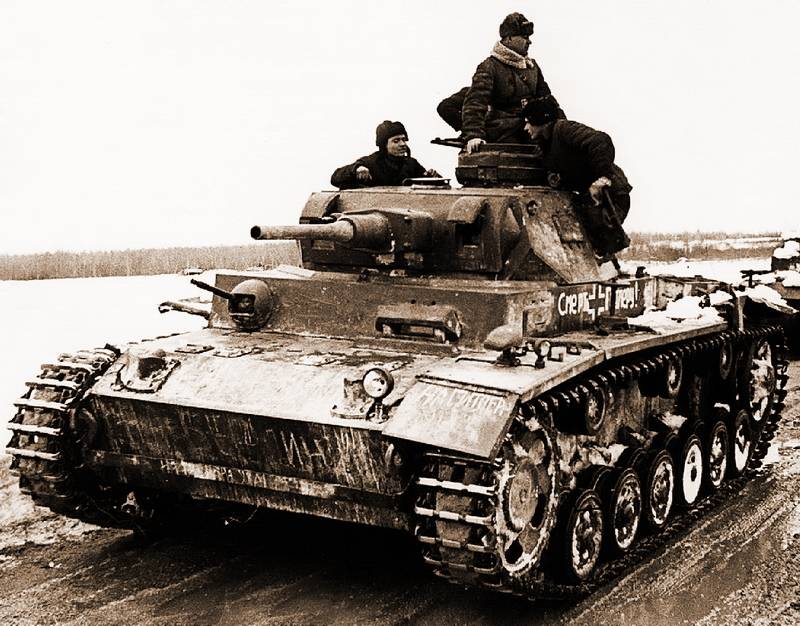
Much less often than Pz.Kpfw.III, in the initial period of the war, our fighters managed to capture Pz.Kpfw.IV medium tanks. This was due to the fact that 439 Pz.Kpfw.IV tanks were involved in Operation Barbarossa, which was approximately 13% of all German tanks that participated in the June 1941 attack on the Soviet Union.
The relative small number of Pz.Kpfw.IV was explained by the fact that the German command initially considered the Pz.Kpfw.III as the main Panzerwaffe tank, and the Pz.Kpfw.IV, armed with a short-barreled 75-mm cannon, was to become an artillery fire support tank.
The main targets for the 75 mm KwK 37 cannon with a barrel length of 24 caliber were light field fortifications, firing points and manpower.
To combat armored targets in the early modifications of the Pz.Kpfw.IV ammunition, there were K.Gr.rot.Pz armor-piercing tracer shells. weighing 6,8 kg. This projectile with an initial speed of 385 m / s at a distance of 100 m along the normal could penetrate 40 mm of armor, which was clearly not enough to defeat tanks with anti-cannon armor. In this regard, shots with cumulative shells were created for the 75-mm KwK 37 cannon, the armor penetration of which, when hit at a right angle, was 70-75 mm. However, due to the low initial speed, the effective firing range against armored vehicles did not exceed 500 m.
A 7,92 mm MG 34 machine gun was paired with the cannon. Another machine gun, mounted in the ball mount of the hull's frontal armor, was at the disposal of the radio operator.
The armor thickness of the early Pz.Kpfw.IV was the same as on the Pz.Kpfw.III. Based on the experience of hostilities in France and Poland, the protection of tanks of the Pz.KpfW.IV Ausf.D modification, produced in the period from October 1939 to May 1941 in the amount of 200 units, was increased by installing an additional 30-mm frontal and 20-mm side armor.
The PzIV Ausf.E tanks, produced from September 1940 to April 1941, had 50 mm frontal armor and 20 mm side armor, reinforced with 20 mm armor plates. The frontal armor of the turret was 35 mm, the side armor of the turret was 20 mm. A total of 206 PzIV Ausf.E tanks were delivered to the customer.
Shielding with additional armor was irrational and was considered only a temporary solution, and the protection of the turret was considered insufficient. This was the reason for the appearance of the next modification - Pz.Kpfw.IV Ausf.F. Instead of using hinged armor, the thickness of the frontal upper hull plate, the frontal plate of the turret and the gun mantlet was increased to 50 mm, and the thickness of the hull sides and sides and stern of the turret - up to 30 mm. The composition of the weapons remained the same. From April 1941 to March 1942, 468 PzIV Ausf.F tanks were produced.
The combat weight of the Pz.Kpfw.IV tanks used on the Eastern Front in the first half of the war was 20-22,3 tons. The 300 hp engine. with., running on gasoline, provided the maximum speed on the highway up to 42 km / h.
Trophy SPGs
In the first two years of the war, the German StuG.III self-propelled guns were captured by the Red Army even more often than the Pz.Kpfw.IV medium tanks. This self-propelled gun was created in response to the demand of the Wehrmacht command, who wants to get a mobile artillery mount capable of acting in the interests of the infantry and clearing its way on the battlefield, destroying firing points and making passes through wire obstacles with direct fire.
Unlike tanks for self-propelled guns, direct fire support did not require the placement of weapons in a rotating turret. The priority areas were considered to be firepower, small dimensions, good frontal armor and low production costs. This self-propelled gun was created using the chassis of the Pz.Kpfw.III tank.
In the wheelhouse, protected by 50 mm frontal and 30 mm side armor, a 75 mm StuK 37 cannon with a barrel length of 24 caliber was installed. The mass of the StuG.III self-propelled guns of the first modifications was 19,6-22 tons. The road speed was up to 40 km / h.
Production of the serial StuG.III Ausf.A began in January 1940. The production of assault self-propelled guns with short-barreled 75-mm guns continued until February 1942.
A total of 834 ACS of the Ausf.A / C / D / E modifications were produced. Most of them ended up on the Eastern Front.
In the first year of the war, in the absence of their own self-propelled guns, captured StuG.IIIs were actively used in the Red Army under the designation SU-75.
German "artillery attacks" had good combat and service-operational characteristics, had good protection in the frontal projection, were equipped with excellent optics and a completely satisfactory weapon. In addition to using the StuG.III in its original form, some of the vehicles were converted into 76,2 and 122 mm SPGs using Soviet artillery systems.
By the summer of 1942, the Soviet command had accumulated some experience in the use of captured self-propelled guns and had an idea of what an assault ACS should be, designed for firing at visually observed targets.
Experts came to the conclusion that high-explosive 75-76,2-mm projectiles are suitable for providing fire support to infantry, they have a satisfactory fragmentation effect on the enemy's undeveloped manpower and can be used to destroy light field fortifications. But against capital fortifications and brick buildings turned into long-term firing points, self-propelled guns, equipped with larger caliber guns, were required.
Compared with the "three-inch" projectile, the howitzer 122-mm high-explosive fragmentation projectile had a significantly greater destructive effect. One shot from a 122 mm gun could achieve more than a few shots from a 76,2 mm gun. In this regard, on the basis of the StuG.III, it was decided to create an SPG armed with a 122 mm M-30 howitzer.
However, to accommodate the 122mm M-30 howitzer on the StuG.III chassis, a new, larger wheelhouse had to be redesigned. The Soviet-made fighting compartment, which housed 4 crew members, became significantly higher, its frontal part had anti-cannon armor.
The thickness of the frontal armor of the cabin is 45 mm, the sides are 35 mm, the stern is 25 mm, the roof is 20 mm. Thus, the security of the self-propelled gun in the frontal projection approximately corresponded to the average T-34 tank.
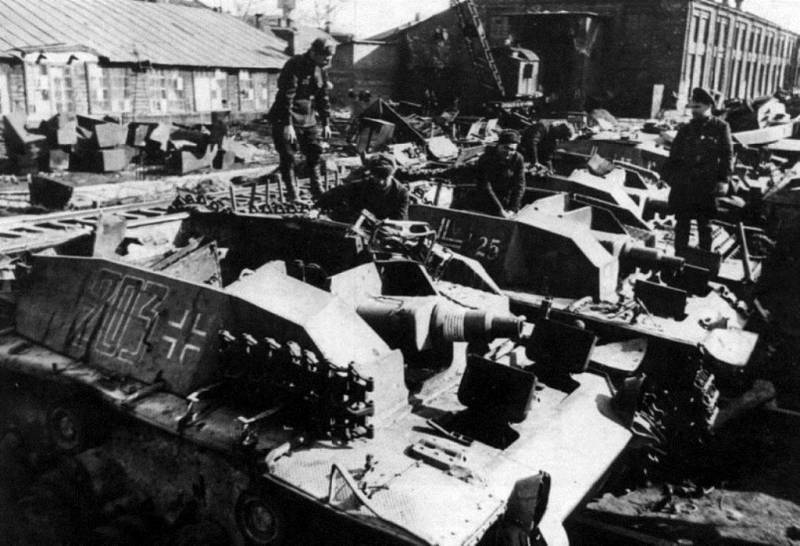
Captured StuG.III assault guns in the courtyard of the Moscow elevator plant. April 1942.
Serial production of 122-mm self-propelled guns on the StuG.III chassis began in late autumn 1942 at the non-evacuated facilities of the Mytishchi Carriage Works No. 592.
In the period from October 1942 to January 1943, 21 SPGs were handed over to military acceptance. The self-propelled gun received the designation SG-122, sometimes there is also SG-122A ("Artshturm").
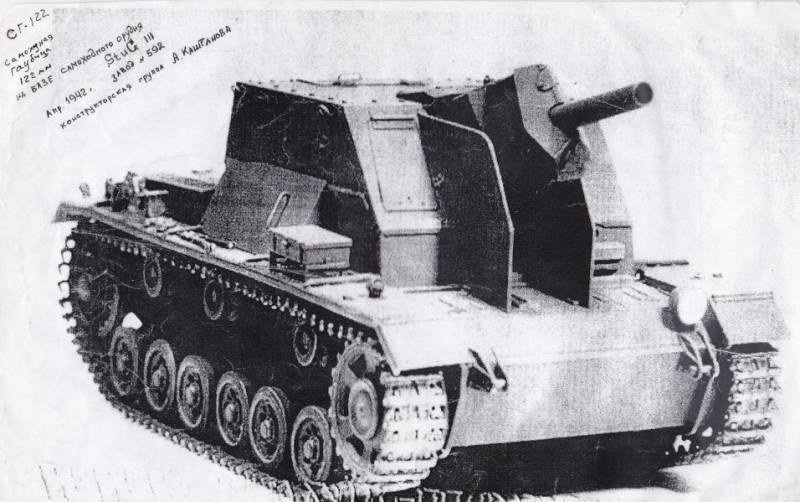
ACS SG-122
Part of the SG-122 was sent to self-propelled artillery training centers, one machine was intended for testing at the Gorokhovets training ground. In February 1943, the 1435th self-propelled artillery regiment, which had 9 SU-76s and 12 SG-122s, was included in the 9th Panzer Corps of the 10th Army of the Western Front.
There is little information about the combat use of the SG-122. It is known that in the period from March 6 to March 15, the 1435th SAP, participating in battles, lost all its materiel from enemy fire and breakdowns and was sent for reorganization. During the battles, about 400 76,2 mm and more than 700 122 mm shells were used up. The actions of the 1435th SAP contributed to the capture of the villages of Nizhnyaya Akimovka, Verkhnyaya Akimovka and Yasenok. Moreover, in addition to firing points and anti-tank guns, several enemy tanks were destroyed.
In the course of hostilities, it turned out that due to the congestion of the front rollers, the resource and reliability of the chassis are low. In addition to poor personnel training, the results of combat use were affected by the lack of good sights and observation devices. Due to poor ventilation, there was a strong gas pollution in the conning tower, which forced them to fire with open hatches. Due to the tightness of the working conditions of the commander, two gunners and the loader were difficult.
The SU-76I ACS turned out to be much more successful. For the construction of this self-propelled gun, the Pz.Kpfw.III chassis was used. The self-propelled unit had a booking of the frontal part of the hull with a thickness of 30-50 mm, the side of the hull - 30 mm, the front of the cabin - 35 mm, the side of the cabin - 25 mm, the feed - 25 mm, the roof - 16 mm. The deckhouse had the shape of a truncated pyramid with rational angles of inclination of armor plates, which increased armor resistance. The self-propelled gun was armed with a 76,2-mm S-1 gun, which was created on the basis of the F-34 tank specifically for the light experimental self-propelled guns of the Gorky Automobile Plant.
Some of the vehicles intended for use as commanders were equipped with a powerful radio station and a commander's cupola with a Pz. Kpfw III.
When creating the SU-76I, the designers paid special attention to the review from the combat vehicle. In this regard, this self-propelled gun outperformed most of the Soviet tanks and self-propelled guns produced in the same time period. The SU-76I in a number of parameters looked more preferable than the SU-76 and SU-76M. First of all, the SU-76I won in terms of the safety and reliability of the engine-transmission group.
ACS SU-76I officially entered service on March 20, 1943. When forming units equipped with new self-propelled guns, the same regular order was used as for the SU-76, but instead of the commander's T-34s, at first they used captured Pz. Kpfw.III, which were then replaced by the SU-76I in the command version.
The release of self-propelled guns on a trophy chassis continued until November 1943 inclusive. A total of 201 SU-76Is were assembled.
The SU-76I self-propelled guns were popular among the crews who noted higher reliability, ease of control and an abundance of observation devices compared to the SU-76. In addition, in terms of mobility on rough terrain, the self-propelled gun was practically not inferior to the T-34 tanks, surpassing them in speed on good roads. Despite the presence of an armored roof, self-propelled guns liked the relative spaciousness inside the fighting compartment. Compared to other domestic self-propelled guns, the commander, gunner and loader in the conning tower were not too constrained.
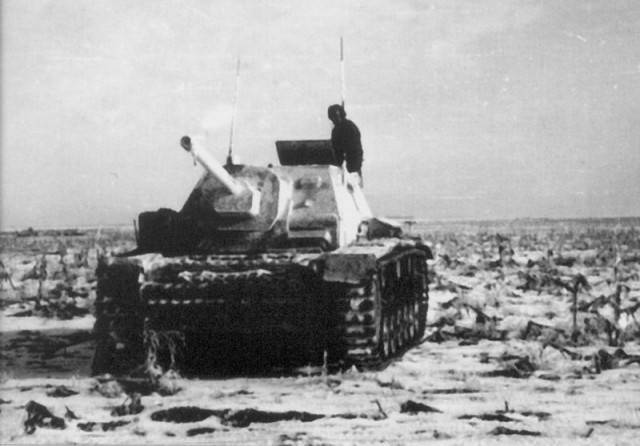
Cases of successful use of the SU-76I against German tanks Pz.Kpfw.III and Pz.KpfW.IV have been documented. But in the summer of 1943, when the self-propelled guns first went into battle, their firepower was no longer enough for a confident fight with all the armored vehicles available to the Germans, and the armor did not provide protection against 50 and 75-mm armor-piercing shells. Nevertheless, the SU-76I SPGs fought successfully until the first half of 1944. After that, the few surviving vehicles were decommissioned due to the exhaustion of the running gear, engine and transmission resource.
On trophy materiel
In 1942-1943. on the Soviet-German front, several tank battalions of mixed composition fought, in which, in addition to Soviet-made armored vehicles and those obtained under Lend-Lease, there were captured Pz.Kpfw. 38 (t), Pz. Kpfw.III, Pz.Kpfw.IV and self-propelled guns StuG.III.
So, in the already mentioned "Nebylova battalion" there were 6 Pz.Kpfw.IV, 12 Pz. Kpfw.III, 10 Pz.Kpfw.38 (t) and 2 StuG.III.
Another battalion on captured materiel was also part of the 31st Army of the Western Front. As of August 1, 1942, it consisted of nine Soviet light T-60s and 19 captured German tanks.
The 75th separate tank battalion (from the 56th Army) as of June 23, 1943 had four companies in its composition: 1st and 4th captured tanks (four Pz.Kpfw.IV and eight Pz.Kpfw.III) , 2nd and 3rd - on British Mk.III Valentine (14 vehicles).
The 151st Tank Brigade received 22 German tanks in March (Pz.Kpfw.IV, Pz.Kpfw.III and Pz.Kpfw.II).
On August 28, 1943, units of the 44th Army were assigned a separate tank battalion, in which, in addition to the American M3 Stuart and M3 Lee, there were 3 Pz.Kpfw.IV and 13 Pz.Kpfw.III.
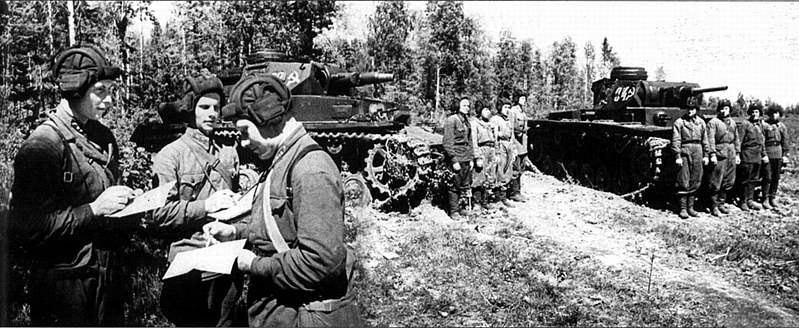
A unique military unit of its kind in the Red Army was the 213rd Tank Brigade, which was almost completely armed with captured armored vehicles.
On October 15, 1943, the brigade had 4 T-34 tanks, 35 Pz.Kpfw.III and 11 Pz.Kpfw.IV. After participating in hostilities (by the time of the withdrawal for reorganization) in early February 1943, 1 T-34 and 11 captured tanks remained in the brigade. There is information that part of the Pz.Kpfw.III and Pz.Kpfw.IV were out of order as a result of breakdowns.
In addition to various units of captured tanks, Soviet units had unreported single vehicles used to guard headquarters and rear facilities.
Some conclusions
Soviet crews who fought in captured tanks and self-propelled guns noted that the living conditions and ease of work in them were better than in Soviet vehicles. Our tankers highly appreciated German sights, observation devices and communications.
At the same time, German armored vehicles required more thorough maintenance and were much more difficult to repair.
In terms of firepower and level of protection, captured tanks captured in 1941–1942 did not surpass the thirty-four, yielding to it in cross-country ability on soft soils and snow.
The difficulty of starting the engine at negative temperatures was noted as a significant drawback.
The carburetor engines of the German tanks were very voracious, as a result of which the cruising range on a country road without refueling for the "triplets" and "fours" was 90-120 km.
Taking into account the difficulties of repairs in the field, the irregular supply of spare parts and ammunition, with the saturation of Soviet tank units with domestically produced armored vehicles in the second half of 1943, interest from the command of the Red Army in captured tanks decreased.
To be continued ...
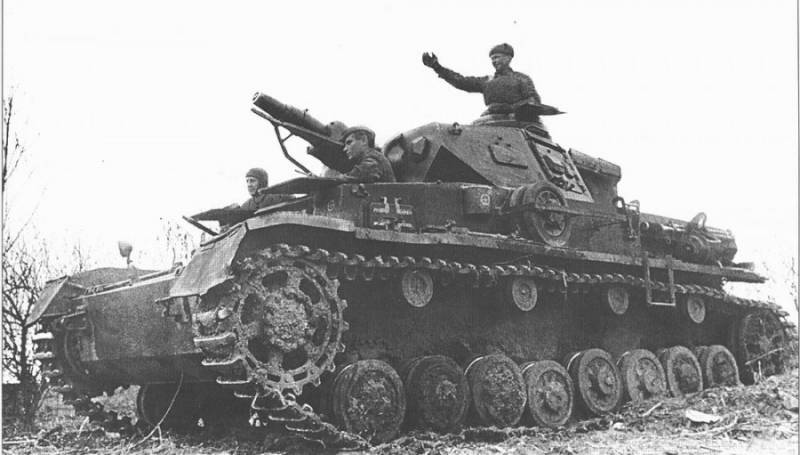
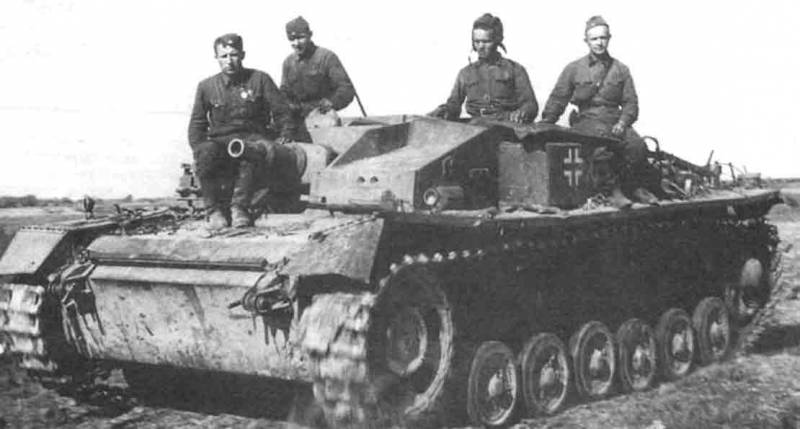
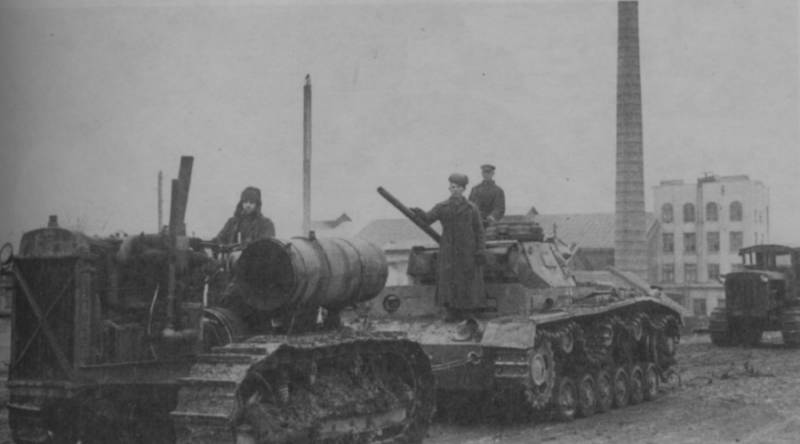
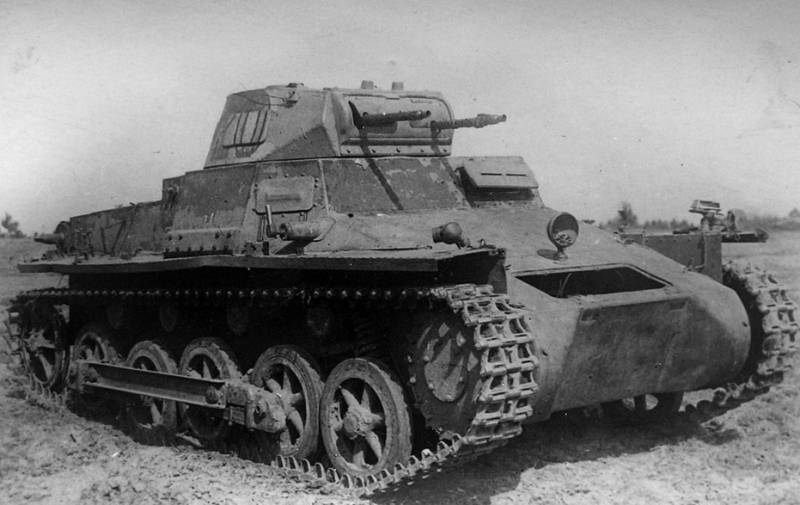
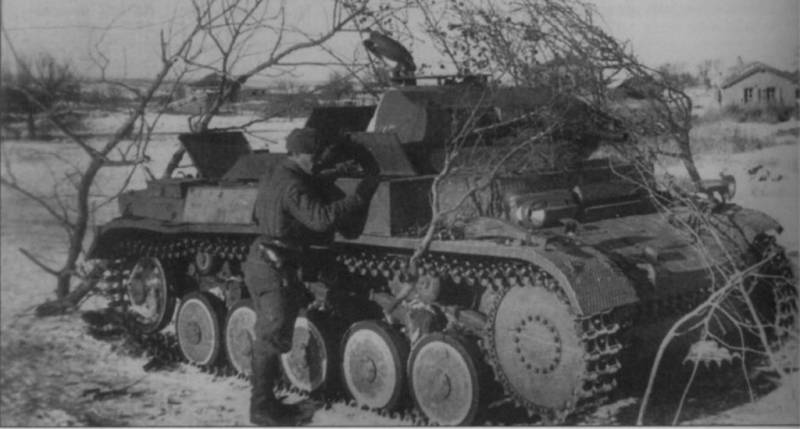
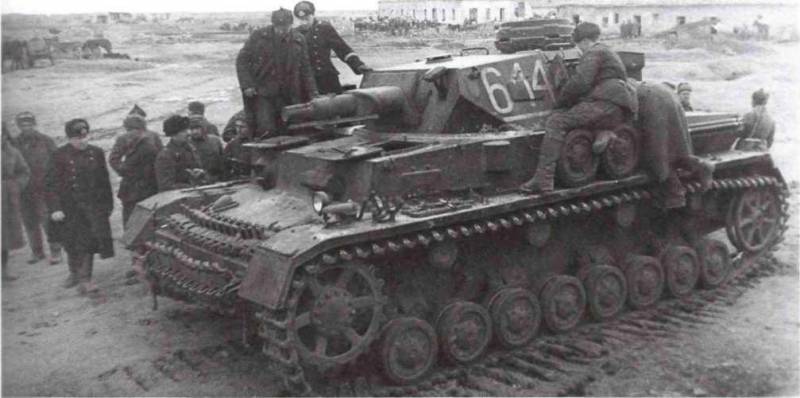
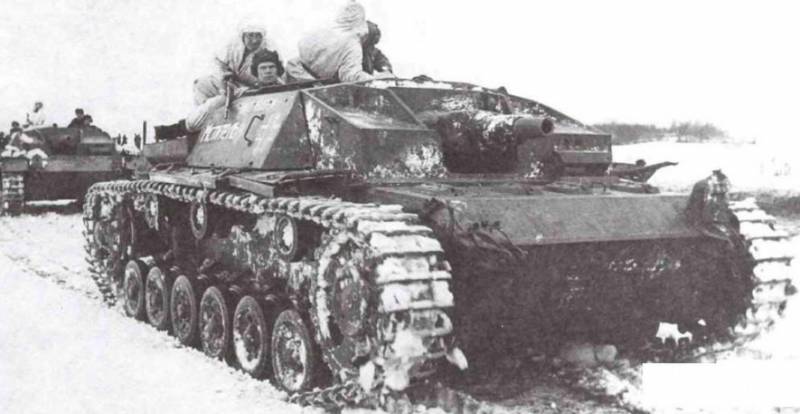
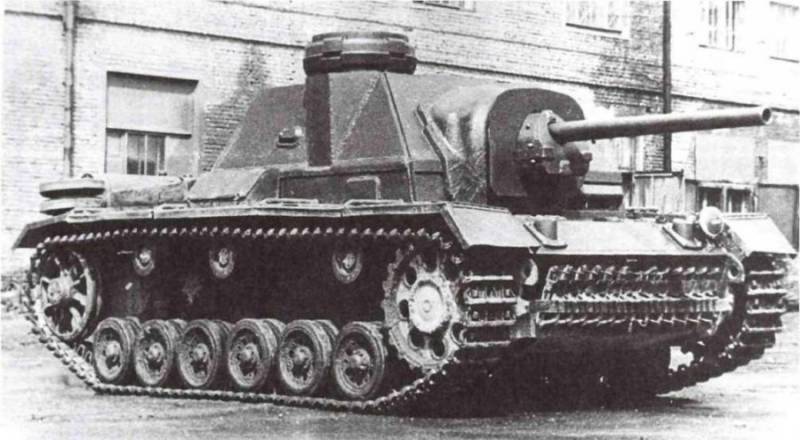
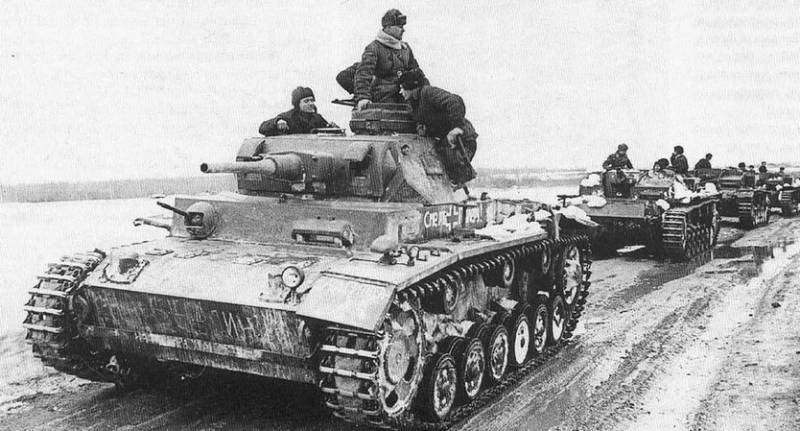
Information